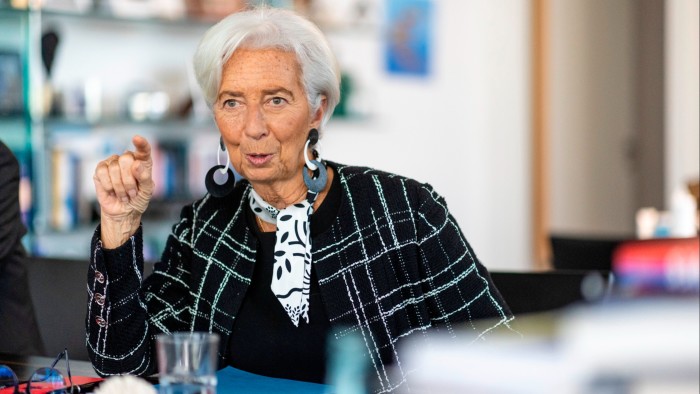Unlock the White House Watch newsletter for free
Your guide to what the 2024 US election means for Washington and the world
As European policymakers fret about the threat to EU competitiveness posed by Donald Trump, there is at least one US phenomenon that Europe would love to import: the country’s ability to fund itself with dynamic equity finance provided by individuals and institutional investors. Europe continues to rely on loans from its hobbled banking system for corporate finance.
A European Central Bank analysis found that if EU households put as much into equities and bonds as American counterparts, it could redirect a stock of up to €8tn, and an ongoing flow of €350bn a year, away from cash deposits. The EU has been pursuing a Capital Markets Union to spur such a shift for a decade — to no tangible effect. So why should anyone take the initiative seriously now?
In an interview last week, ECB president Christine Lagarde told the Financial Times that despite the challenges posed by a second Trump term, she had never before seen “such a level of understanding and excitement” among policymakers in the region to shake up the status quo and ensure more European money is productively invested.
Her own recipe, underpinned by a CMU now rebranded as a Savings and Investment Union, involves a change of regulatory structures, particularly by turning securities regulator Esma into a powerful institution like the Securities and Exchange Commission that could cut through nation states’ self-interest and push an agenda of securities investment across the region.
The nomination of Maria Luis Albuquerque as the EU’s next financial services commissioner has given bankers hope that there will be practical follow-through, too. The Portuguese politician and former Morgan Stanley non-executive has already pledged to consolidate the fractured EU market for securitisation.
She is expected to try to build a “coalition of the willing”, encouraging the likes of France, Germany and other like-minded issuance locations to establish common principles for the treatment of insolvencies in securitised products, overriding national rules. Creating a more homogeneous market, and simultaneously allowing banks to recycle a larger share of risk, is seen as a crucial way to attract large-scale institutional investors, both local and international.
For retail investors, Lagarde envisages a new investment structure, which could be EU-kitemarked, to guarantee common standards and low costs. She also recognises that equity investment may need to be tax-incentivised. France’s Livret A scheme is a partial blueprint — it diverts the savings of bank customers into tax-free contributions to state priorities, like funding the defence budget.
But in common with the UK’s cash Isa regime, the Livret A tax break misses a trick: it traps retail money in zero-risk products with low guaranteed returns, rather than fostering the enthusiasm for equity investment that 401k schemes have long supported in the US. Lagarde and other European policymakers don’t accept that Europeans’ attitude to risk is fundamentally lower than their American cousins.
Politicians, limited by straitened budgets, might well respond to proposals for new investor tax breaks with stony faces. But the economic argument is sound: if the money is mobilised to finance innovation, boost productivity and generally underpin growth, this surely is just how an economy could and should leverage private wealth.
There are risks: for as long as European companies underperform their US rivals, why would your average European investor favour European tech over the Magnificent Seven, or Volkswagen over Tesla? A knee jerk restriction of tax breaks to domestic investment would either render the scheme unattractive or drive a poor capital allocation.
And yet it is possible to imagine a benign scenario, unfashionable as it might seem amid today’s European gloom. The willing-coalition principle offers a chance to create opt-in mechanisms for keen member states. Advocates cite the SE European corporate structure, taken up by thousands of groups from Airbus to Allianz, as a useful precedent.
What, then, if both a tax-incentivised retail investment structure and a securitisation initiative were conceived under such an umbrella and communicated as part of a broader growth agenda by a compelling line-up of stable political leaders? Those are some big ifs.
But with the wind in the right direction, international asset managers might just be persuaded to rethink their conviction that Europe is a stagnant backwater that simply can’t compete with the US.
Read the full article here

